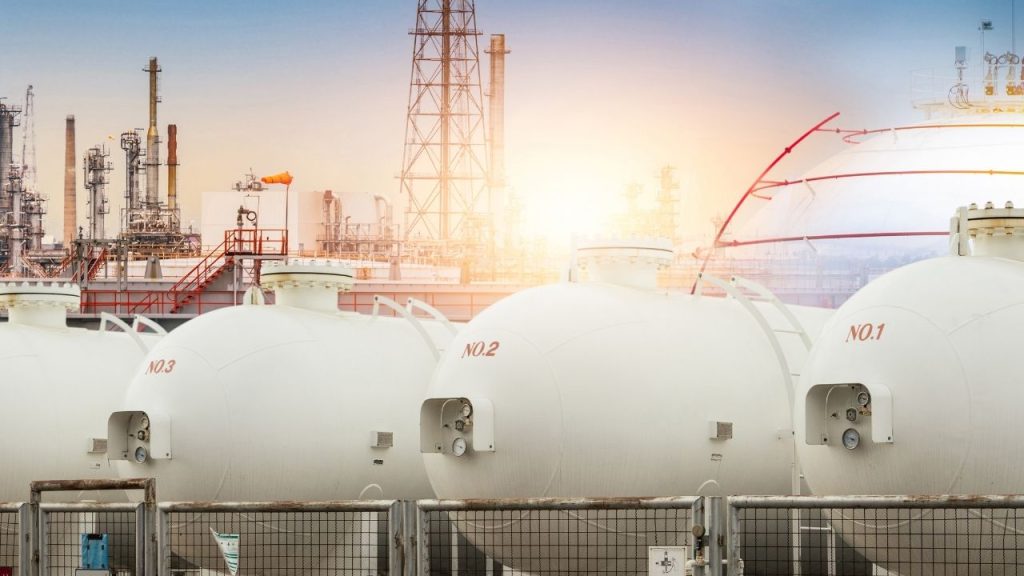From Production to Application: An Overview of Industrial Gases

A crucial pillar supporting several industrial processes, medical uses, and environmental applications is the industrial gas sector. These gases, which range from nitrogen used in food packaging to oxygen used in hospitals, are essential. However, is investing in the production of these gases a sound business decision? Let’s look more closely.
Names of Industrial Gases
- Oxygen (O2)
- Nitrogen (N2)
- Argon (Ar)
- Carbon Dioxide (CO2)
- Hydrogen (H2)
- Helium (He)
- Acetylene (C2H2)
- Neon (Ne)
- Krypton (Kr)
- Xenon (Xe)
- Chlorine (Cl2)
- Sulfur Hexafluoride (SF6)
- Ammonia (NH3)
Feasibility and Techno-Economic Viability
Industrial gases continue to be in high demand. Their uses range from chemical processing to metallurgy and refining. A feasibility study demonstrates that significant profitability can result from a reliable supply chain, a solid technological foundation, and regulatory compliance.
Why Invest in this Manufacturing Industry
- Trends and Analysis:
Industrial gases are increasingly used in energy storage, metal fabrication, and healthcare. The global shift towards clean energy accentuates the demand for gases like hydrogen. - SWOT Analysis:
Strengths:
- Established market with diversified applications.
- High entry barriers due to technological demands.
Weaknesses:
- Significant capital investment.
- Sensitivity to global economic downturns.
Opportunities:
- Growth in emerging markets.
- Increasing demand in healthcare and clean energy sectors.
Threats:
- Potential regulatory changes.
- Volatility in raw material prices.
- Profitability Analysis:
Initial capital costs can be high, but with a global market size of over $100 billion and a CAGR of approximately 6%, ROI is achievable in the medium to long term. - Global Expansion and Localization:
Emerging economies are witnessing a rise in demand. Localizing production can cater to regional demands more efficiently.
Supply Chain
The supply chain’s effectiveness is crucial. From sourcing raw materials to end-user delivery, a robust and efficient chain ensures reduced costs and timely delivery.
Branding and Marketing
In a cutthroat market, differentiation requires strong branding. Sectors like healthcare, food & beverage, and energy can experience growth thanks to effective marketing techniques.
Regulatory Changes and Industry Compliance
It’s crucial to maintain compliance. Different nations may have different laws, especially when it comes to environmental effects. A flexible solution that can adhere to local regulatory requirements is essential.
Technological Innovation
The future of the sector depends on technical development. Storage, transportation, and production innovations have the potential to drastically lower costs and boost effectiveness.
Frequently Asked Questions
- What drives the demand for industrial gases?
Primarily, healthcare, energy sectors, and manufacturing processes. - Are there environmental concerns?
Yes, especially for gases like SF6. However, innovations are leading to environmentally friendly alternatives. - How does localization affect the industry?
Localization can cater to specific regional demands, ensuring timely delivery and reduced transport costs.
Visit this Page for More Information: Start a Business in Industrial Gases Industry
Future Opportunities
Wide-ranging opportunities are presented by the drive for greener options and the increasing healthcare needs in emerging nations. The industry may undergo a transformation when hydrogen becomes more developed as a sustainable energy source.
The Intricacies of the Industrial Gas Industry: Delving Deeper
After giving a brief summary of the industrial gas market and its possibilities for investment, let’s further analyze the many aspects of this industry that frequently go overlooked but are crucial to determining its course.
Detailed Analysis of Selected Gases
- Oxygen (O2)
Applications: Healthcare, metallurgy, water treatment.
Market Dynamics: The healthcare sector’s rise, especially in developing countries, promises a steady demand for medical-grade oxygen. Moreover, industries that employ steel-making processes will consistently require oxygen.
Challenges: Maintaining purity for medical use and ensuring efficient storage. - Hydrogen (H2)
Applications: Refining, chemical synthesis, potential fuel source.
Market Dynamics: The world’s green energy push makes hydrogen a strong contender as a clean fuel source, thus driving its demand up.
Challenges: Production largely relies on fossil fuels, though green production methods are emerging. - Carbon Dioxide (CO2)
Applications: Beverage carbonation, refrigeration, enhanced oil recovery.
Market Dynamics: With increasing demands in the beverage industry and its role in innovative applications like vertical farming, CO2’s market seems bullish.
Challenges: Tackling the environmental impact and sourcing it sustainably.
Supply Chain Nuances
While previously mentioned, the importance of an efficient supply chain can’t be stressed enough. Its intricacies include:
- Sourcing: Establishing sustainable and local sources ensures reduced costs and carbon footprint.
- Storage: Industrial gases often require storage at extremely low temperatures or high pressures. This demands significant investment in infrastructure.
- Distribution: Efficient distribution channels, including pipelines and specialized transport vehicles, play a vital role in timely delivery.
Emerging Markets – A Closer Look
Regions like Africa, Southeast Asia, and parts of South America are witnessing a surge in industrialization. Their needs vary, with some regions requiring more of specific gases for their dominant industries:
- Africa: The rise in healthcare infrastructure increases the demand for medical gases. Mining operations in several African countries require gases like oxygen and nitrogen.
- Southeast Asia: Rapid industrialization and an emerging tech industry push the demand for gases used in electronics manufacturing.
Evolving Consumer Needs and Demands
As industries grow and innovate, the demand for specific gases evolves:
- Electronics: Rare gases like neon and xenon are vital for specific applications in the electronics industry.
- Food & Beverages: Nitrogen and CO2 are essential for packaging, preservation, and carbonation.
- Automobile: With the push for hydrogen fuel cells, the demand for high-grade hydrogen is anticipated to grow.
Environmental Impacts & Sustainability
Sustainability is no longer a choice but a necessity. The industry is facing pressure to:
- Reduce Carbon Footprint: Transitioning to renewable energy sources for production.
- Develop Eco-friendly Alternatives: Especially for gases with high global warming potential like SF6.
Training and Skill Development
With technological advancements, the need for skilled manpower grows. Investing in:
- Training Programs: For the safe handling and storage of gases.
- Research & Development: Encouraging innovation and development of new applications.
Related Business Plan: Production of Industrial Gases and Speciality Gases Mixture
Competitive Landscape & Strategies
The industrial gas sector is dominated by a few major players. For new entrants, understanding the competitive landscape is essential:
- Market Leaders: Companies like Linde, Air Products, and Air Liquide have established strong global presences.
- Competitive Strategies: Differentiation based on purity levels, sustainable production methods, and efficient distribution channels can give a competitive edge.
Economic Impacts & Forecasting
Economic downturns can impact demand, but certain sectors remain resilient:
- Healthcare: This sector’s demand for gases, especially oxygen, remains consistent.
- Agriculture: With the rise in controlled-environment agriculture, the demand for CO2 is expected to remain steady.
Forecasting based on regional economic trends, global shifts towards sustainable practices, and emerging industries will be crucial for long-term success.
Regulatory Changes: A Deep Dive
Understanding regional regulatory landscapes is vital:
- Europe: Stringent regulations, especially concerning environmental impact. Transitioning to green production methods is incentivized.
- Asia: Diverse regulatory landscape, with developed nations like Japan having strict regulations, while some developing nations are still formulating comprehensive policies.
- Americas: The U.S. emphasizes safety and environmental standards, while countries like Brazil are witnessing a regulatory evolution with their growing industrial base.
Investment & Financing
Breaking into the industrial gas market or expanding operations requires significant investment:
- Capital Expenditure: High due to the need for advanced infrastructure and technology.
- Financing Options: Consider partnerships, venture capital, or public financing depending on the scale.
Understanding the Layers of the Industrial Gas Ecosystem
The industrial gas sector’s vastness encompasses multiple layers, from its diverse applications to the intricate nuances of its production processes. Expanding on the established foundation, we delve deeper to uncover more layers of this dynamic ecosystem.
Advanced Production Techniques
Producing industrial gases isn’t merely about extracting them but involves sophisticated techniques:
- Cryogenic Distillation: A method where air is liquefied and then separated into its component gases. Predominantly used for oxygen, nitrogen, and argon.
- Steam Methane Reforming (SMR): Primary method to produce hydrogen by reacting methane with steam.
- Electrolysis: Splitting water into hydrogen and oxygen using an electric current. A potential green method for hydrogen production.
- Pressure Swing Adsorption (PSA): A technology used to separate some gas species from a mixture of gases. Commonly used for hydrogen purification.
Emergence of Specialty Gases
While our focus has largely been on commonly known industrial gases, specialty gases, often used in niche applications, are gaining traction:
- Calibration Gases: Mixtures used for calibrating instruments.
- Halocarbon Compounds: Used in refrigerants, propellants, and solvents.
- Laser Gases: Mixtures used in lasers for cutting, welding, and medical applications.
Safety Protocols & Standards
Handling gases, especially under high pressure or in a liquefied state, necessitates robust safety measures:
- Storage: Using appropriate cylinders or tanks designed to handle specific pressures and temperatures.
- Transport: Ensuring that vehicles meet safety standards and drivers are trained for hazardous material transport.
- Handling: Training personnel on proper handling techniques, especially for gases that are toxic, flammable, or reactive.
Market Dynamics & Global Trade
The global trade dynamics of industrial gases are shaped by several factors:
- Geopolitical Factors: Trade relations between countries can influence the flow of certain gases, especially specialty ones.
- Local Production Vs. Import: Regions with limited production capacity may rely on imports, creating opportunities for export-oriented manufacturers.
- Pricing Dynamics: Influenced by production costs, demand-supply balance, and geopolitical factors.
Research & Development
Innovation drives the industry forward:
- New Production Methods: Emphasizing sustainable and energy-efficient methods.
- Application-Based R&D: Discovering new uses for existing gases or developing gas mixtures tailored for specific industries.
Consumer Engagement & Brand Loyalty
Given the B2B nature of the industry, fostering long-term relationships is crucial:
- Quality Assurance: Ensuring and communicating consistent product quality can build trust.
- After-Sales Support: Offering support, especially in terms of safety training and equipment maintenance, fosters loyalty.
- Transparency: Clear communication regarding pricing, product origin, and environmental impact can create informed and loyal consumers.
Expansion Strategies
For businesses eyeing growth, several expansion avenues exist:
- Acquisitions: Taking over existing players can offer instant market access.
- Joint Ventures: Collaborating with local players, especially in foreign markets, to leverage local expertise and share risks.
- Greenfield Investments: Setting up new production facilities, often in emerging markets or regions with untapped potential.
Environmental and Social Responsibility
With increasing global emphasis on sustainable practices:
- Carbon Credits: Engaging in sustainable production can earn carbon credits, adding another revenue stream.
- Community Engagement: Especially in regions with production facilities, engaging with the local community, offering employment, and supporting local initiatives can build goodwill.
Challenges & Risks
Like any industry, the industrial gas sector has its set of challenges:
- Volatile Raw Material Prices: Especially for gases where production relies on fossil fuels.
- Regulatory Compliance: Adhering to a myriad of regional and global regulations can be challenging and financially draining.
- Technological Disruptions: Rapid technological advancements can render existing production methods obsolete.
The Role of AI & Digitization
Modern challenges require modern solutions:
- Supply Chain Optimization: AI can predict demand and optimize supply chain operations to reduce costs and improve efficiency.
- Predictive Maintenance: AI-driven analytics can predict equipment failures, reducing downtimes.
- Digital Customer Interface: Offering a digital platform for customers to place orders, track shipments, and access support.
Future Projections & Opportunities
The future beckons with promise:
- Clean Energy: With hydrogen as a potential fuel source, its production, storage, and transport offer vast opportunities.
- Space Exploration: Gases like xenon are used in satellite propulsion, and with the commercial space industry emerging, the demand is poised to grow.
- Healthcare: With an aging global population, the need for medical gases, especially oxygen, will continually rise.
The Road Ahead
Global macrotrends will undoubtedly have an impact on the industrial gas sector’s future:
- Sustainability: First, sustainability Pressure on the sector to produce gases more sustainably will grow as the world works to achieve its climate goals. This could lead to developments like the green electrolysis of water to produce hydrogen using renewable energy sources.
- Automation and Digital Transformation: The industrial gas industry will increasingly include AI and machine learning, just like other industries. With the help of these technologies, you may efficiently and cheaply optimize everything from production procedures to logistics.
- Global Collaborations: Collaborations, partnerships, and joint ventures will be essential as the geopolitical landscape changes. These partnerships will speed up market penetration, risk-sharing, and knowledge transfer.
Emerging Markets and Their Potential
Previously unnoticed nations in Africa, Southeast Asia, and South America are suddenly gaining attention. Their quickening industrialization and expanding middle class indicate a rising need for industrial gases. Getting a head start on these markets might provide companies a competitive advantage.
Adapting to Regulatory Environments
The sector will need to be flexible as environmental impacts and safety regulations come under closer scrutiny. It will be crucial to adapt to new rules, particularly in developing nations that are still developing their industrial norms. Active participation in standard-setting and proactive interaction with regulatory authorities can both be profitable.
Investment in Human Capital
Although automation and technology will play major roles, the value of talented human resources cannot be overstated. The industry’s success will depend heavily on ongoing training programs, skill-upgrading workshops, and an emphasis on employee wellbeing.
Crisis Management and Preparedness
The COVID-19 pandemic highlighted the need for crisis preparedness, especially evident with the oxygen shortages faced by numerous countries. The industry needs to develop robust crisis management strategies, ensuring supply chain resilience and flexibility to pivot production based on urgent needs.
Consumer-Centric Approaches
B2B industries frequently forget about the final customer. However, with the availability of information growing, even sectors like industrial gases can’t disregard end consumers. Consumers who are well-informed can relate to open communication, moral production practices, and a focus on sustainability, which can enhance brand perception.
Conclusion
The industrial gas sector is on the verge of a major revolution. Opportunities arise from obstacles, and the future is incredibly promising for those who are prepared to create, adapt, and change. The opportunities are endless, whether it’s exploring new markets, utilizing technology, or simply improving current procedures. The secret will be to have a comprehensive approach that takes into account the planet and its inhabitants as well as earnings. The industry has the chance to not only prosper but also have a good influence on the planet.
Over the past several months, our team has been committed to creating a comprehensive and engaging piece of work that not only embodies our vision and passion but also serves as a resource that we believe will be invaluable to our readers.
The Complete Book on Industrial Gases is an extension of our blog, delving deeper into the subjects we’ve only had the opportunity to briefly explore in our blog posts. It offers further insights, more nuanced discussions, and a plethora of concepts we’ve discussed. We’ve curated the content with great care and attention to detail to ensure that the book complements our existing resources, offering a richer, more detailed exploration of the topics at hand.
Reading this book is like embarking on a journey, one that will take you through landscapes of knowledge that we have meticulously designed and laid out for you. We’ve created it with you, our valued reader, in mind, and we believe it is time well spent for anyone who wants to learn more.
Thank you for being an integral part of our journey. Your thirst for knowledge is what fuels our passion for providing insightful, relevant content. Enjoy the journey of discovery that awaits in the pages of our new book.
Visit the page Select and Choose the Right Business Startup for You for sorting out the questions arising in your mind before starting any business and know which start-up you can plan.
We, at NPCS, endeavor to make business selection a simple and convenient step for any entrepreneur/startup. Our expert team, by capitalizing on its dexterity and decade’s long experience in the field, has created a list of profitable ventures for entrepreneurs who wish to diversify or venture. The list so mentioned is updated regularly to give you a regular dose of new emerging opportunities.
Click here to send your queries/Contact Us
Purchasing a detailed NPCS (Niir Project Consultancy Services) report can provide several benefits, particularly for businesses and individuals looking to invest in new ventures or understand industry trends. Here are some reasons why one might consider buying an NPCS report:
- Detailed Market Analysis: NPCS reports provide in-depth analyses of various markets, including understanding market size, growth rates, demand and supply trends, and key players.
- Feasibility Studies: These reports often include feasibility studies for various projects, giving potential investors an understanding of the project’s viability, expected returns, and risks involved.
- Industry Trends and Forecasts: NPCS reports help investors understand the latest trends in specific industries and future forecasts, helping in strategic decision making.
- Technological Insights: These reports can provide valuable information about the latest technological advancements and how they are impacting specific sectors.
- Regulatory Framework: Understanding the regulatory landscape of an industry or market is crucial for business planning. NPCS reports provide detailed information on the regulatory environment and potential changes.
- Competitive Landscape: NPCS reports also offer insights into the competitive environment of an industry, outlining major competitors, their market shares, and their strategies.
- SWOT Analysis: These reports often include SWOT analyses (Strengths, Weaknesses, Opportunities, Threats) of the industries they cover, providing a balanced view of the pros and cons of investing in those sectors.
- Investment Guidance: For businesses and individuals looking to invest in new ventures, NPCS reports can provide a thorough understanding of the industry, helping them make informed investment decisions.
- Business Planning: Whether starting a new business or expanding an existing one, NPCS reports can be beneficial in business planning by providing comprehensive industry and market information.
- Tailored Information: NPCS reports can be customized according to specific needs, ensuring that businesses get the most relevant and useful information for their unique situation.
In conclusion, an NPCS report can be an invaluable tool in understanding an industry or market, aiding in decision-making, planning, and investment strategies.
See More Links:
- Start a Business in Asia
- Start a Business in Potential Countries for Doing Business
- Best Industry for Doing Business
- Business Ideas with Low, Medium & High Investment
- Looking for Most Demandable Business Ideas for Startups
- Startup Consulting Services
- Start a Business in Africa
- Start a Business in India
- Start a Business in Middle East
- Related Videos
- Related Books
- Related Projects
- Related Market Research Reports
- Read Our Blog Here
OF_20Art23



